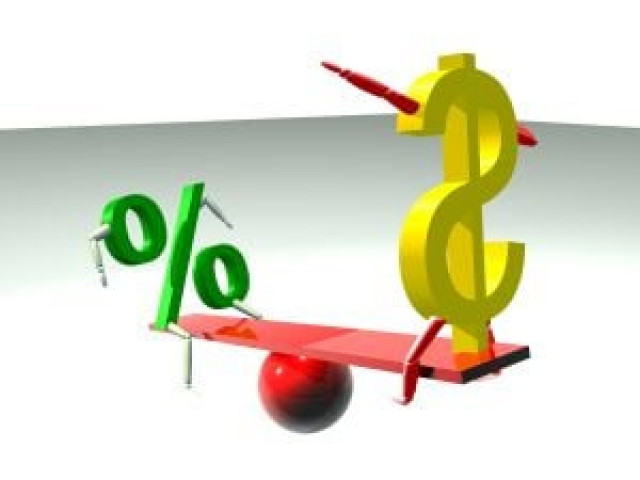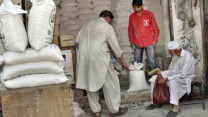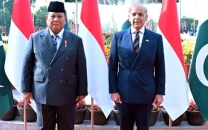Analysis: Plenty of room for interest rate reduction
Why negative real borrowing costs may be good for spurring economic growth.

With interest rates having gone down by 2% since July, the State Bank of Pakistan’s current strategy seems to be geared towards kick-starting the economy by encouraging private sector borrowing. An interesting question to ask then is: what should be the interest rate structure required to stimulate growth and also to attract investment.
Peer Group Analysis
It can be demonstrated that benchmark interest rates in Pakistan should be further lowered by 150 basis points (1.5%) below the average inflation rate to remain at par with its peer group, most of which seem to have negative real interest rates.
In Pakistan, the State Bank has lowered its benchmark discount rate by 2% since July, primarily on the back of declining inflation and reduced government borrowing from the central bank. Given that inflation is currently still 80 basis points below the benchmark interest rate, the SBP still has room to reduce rates by another 50 to 75 basis points at its next monetary policy announcement on November 30.
Benefits of lower interest rates
With fiscal deficit expected to overshoot the budgeted target of 4% of GDP, the government is financing the gap through higher domestic borrowing amid stressed external sources. At present, outstanding government domestic floating debt has reached Rs3.5 trillion (up 28% from last year) with the banks’ share of credit extended to the government increasing by 18% to 66% at the end of September.
If not abated, excessive money printing (inflationary in nature) to plug fiscal slippages can invariably cause a market imbalance going forward. In these exceptional times, an interest rate cut should draw out a win-win situation for both private industry and the government. Industry will benefit through lower borrowing costs, while the government will benefit from lower domestic debt servicing. The government can lower its borrowing cost by Rs17 billion on every 0.5% reduction in the discount rate.
In fact, one can argue that higher interest rates in Pakistan are fuelling inflation, as the current higher interest rates are enhancing the funding requirements for the government which not only have compounding impact (higher interest bill results in higher borrowings) but also have a higher multiplier effect on the money movement.
Impact on capital markets and the banks
Capital investments should also have a positive impact from interest rate rationalisation and will consequently assist in improving the country’s capital markets. Revenue generation of the government would gain traction and consequently lead to lower borrowing requirements of the government and also ultimately result in the reversal of the private sector crowding out phenomenon.
A lower interest rate environment should also increase liquidity of banks as the multiplier effect of reversal of private sector crowing out starts to take place. Non-performing loans (NPL) of the banking sector would also come down from the current relatively high NPL ratio of 14.4%. The banking sector would be favourably inclined towards lending to the private sector in a lower interest rate environment.
This has happened in Pakistan before. Between 2002 and 2006, when interest rates were lowered to single digits, the government started repayments on its domestic debt. The banking sector, given the excess liquidity, had little choice but to extend credit to the consumer segment. As a result, this triggered an economic boom where GDP growth averaged 7% between 2003 and 2007.
That said, we should not rule out capital gains on short term papers in a lower interest rate environment as investments are heavily loaded in favour of government securities. On fundamentals, the KSE-100 Index trades at an attractive forward price-to-earnings ratio of 5.88 (discount of 48% against the region) and offers an inflation adjusted return on equity of 13.2% (premium of 25% against the region).
Conclusion
In conclusion, it may be safely inferred that an interest rate reduction over a period of time is not only inevitable but also compulsory to rejuvenate the lacklustre economy. Based on the analysis above, in the immediate future, the discount rate could be cut by up to 0.75%. However, the ultimate aim should be to achieve an interest rates reduction of around 1.5% below inflation, in line with other economies in Pakistan’s peer group.
Zafar Masud is the chairman of Burj Capital and Umer Pervez is head of research at the firm
Published in The Express Tribune, November 28th, 2011.



















COMMENTS
Comments are moderated and generally will be posted if they are on-topic and not abusive.
For more information, please see our Comments FAQ